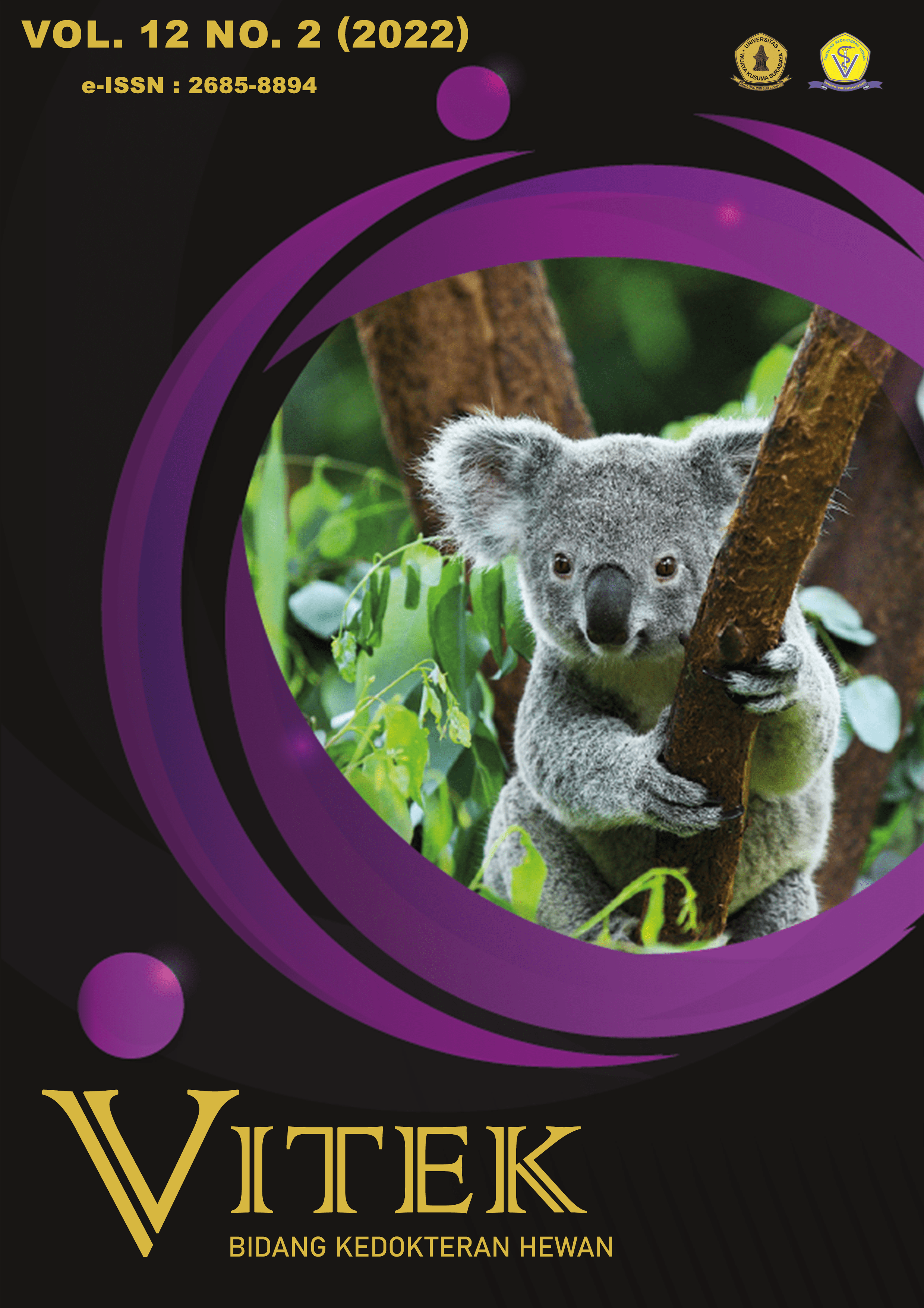Studi kasus : Hernia Inguinalis pada Kucing Domestik Hernia Inguinalis
Main Article Content
Abstract
Inguinal hernia is a protrusion of abdominal contents through an inguinal canal in the abdominal cavity. A female domestic two months year old kitten found with abdominal enlargement in ventral area and a mass that can be pushed inward. Physical examination and radiographic imaging showed that the cat had an inguinal hernia. Hematology test showed in the normal range. X-Ray examination showed the visceral out of the abdomen but still in the skin. Based on the results of physical and clinical examinations this cat are diagnosed with inguinal hernia with fausta prognosis. Laparotomy is performed to return the organs into the abdomen and closed the hernia ring with simple interrupted pattern, 3.0 absorbable polyglycolic acid. Postoperatively, cefotaxime sodium injection antibiotics were given and then continued with amoxicillin with dose 20 mg/kg BB and mefenamic acid with dose 16 mg/kg BB and nonsteroidal inflammation tolfenamic acid (0,1 ml/kg BB). The incision wound is healing in 7 days after surgery.
Article Details
Section
How to Cite
References
Neville-Towle, J, Sakals, S. 2015. Urinary bladder herniation through a caudoventral abdominal wall defect in a mature cat. Can Vet J. 56(9): 934-936.
Shaw SP, Rozanski EA, Rush JE. 2003. Traumatic body wall herniation in 36 dogs and cats. J Am Anim, Hosp Assoc. 39: 35–46.
Sudisma, I.G.N., I.G.A.G. Pemayun, A.A.G.J. Wardhita, dan I.W.Gorda. 2006. Ilmu Bedah Veteriner dan Teknik Operasi Edisi I. Pelawa Sari. Denpasar.
Tobias, K.M., 2010. Manual of Small Animal Soft Tissue Surgery. Wiley-Blackwell. Iowa.
Vidiastuti, D. 2017. Diagnosa Radiografi Kasus Hernia pada Kucing. J. ARSHI Vet Lett. 1 (2): 17-18.
Yool, DA. 2012. Small Animal Soft Tissue Surgery. Oxfordshire (UK): CABI.

